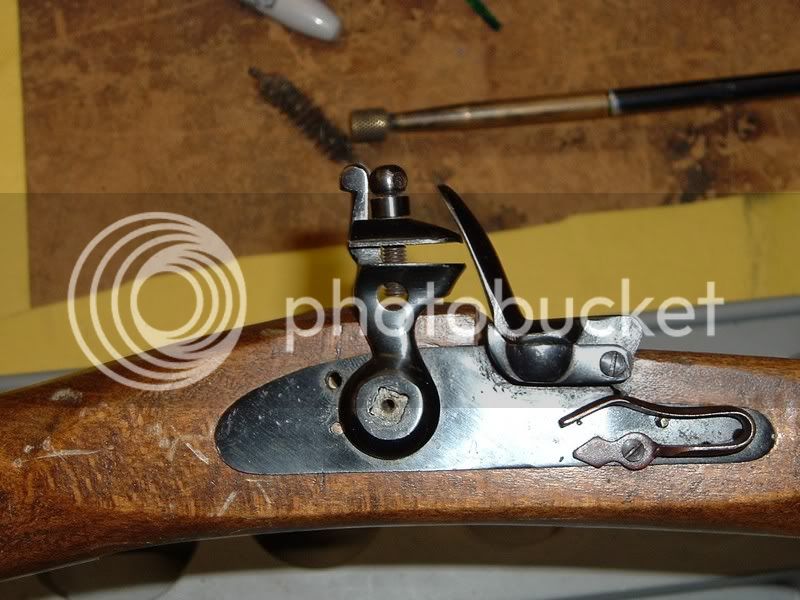Bill of the 45th Parallel said:
That lock has so many things wrong with it, that it's not worth trying to learn anything trying to make it work. The wood is that cheap Spanish/Itallian kindling thats not worth the effort either. If the barrels O.K. then build a fowler around that, and throw the rest away. I would definately pull the breech plug, and inspect the breech, and proof that barrel before using it. Think about it. Whoever built that gun, knows nothing about lock building, which makes me think they also know nothing about barrel building. Just my thoughts.
Bill
There is a lot of wisdom in Bills' post.
I would very definately unbreech the barrel and inspect the bore, threads, and fit of the plug. Especially check the fit of the plug and the condition of the threads.
I would then proof the barrel with double the expected load and double ball by tightly securing the barrel to a 2X4, with about a 12" length of 2X4 screwed down tight to the "carriage", behind the barrel, to prevent the barrel separating from the 2X4 under the recoil of that heavy load.
Place the breech end of the barrel/2X4 assembly into a tire, preferably one placed in a ditch, tie everyting down SECURELY, and touch 'er off with cannon fuse.
I would suggest marking the barrel every coupla inches and micing those locations prior to proofing this barrel. Remeasure those exact locations, and if there is any enlargement of those dimentions, indicating a bulge, that barrel is not safe to fire...given that the barrel is intact after proofing. :winking:
It might be a good idea to have the barrel X-rayed to check for internal flaws after proofing.
That said, I have learned a TON from making decent locks from old, poor quality locks. However, I don't think ever I began with a lock that poorly made.
J.D.






